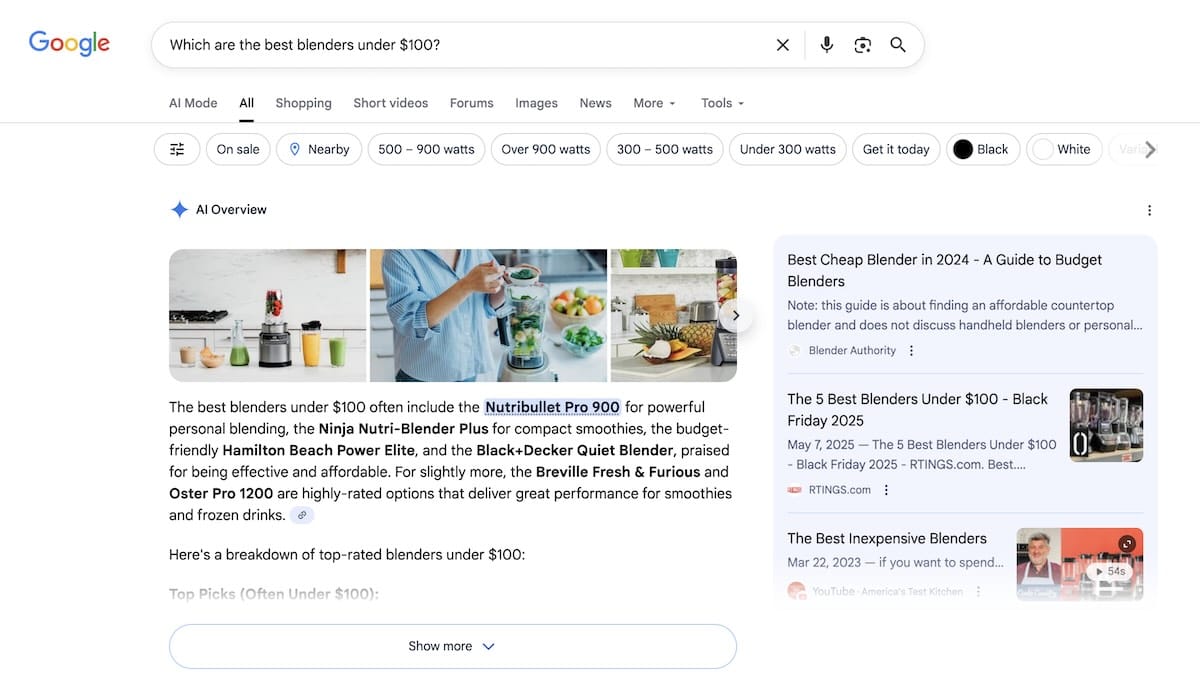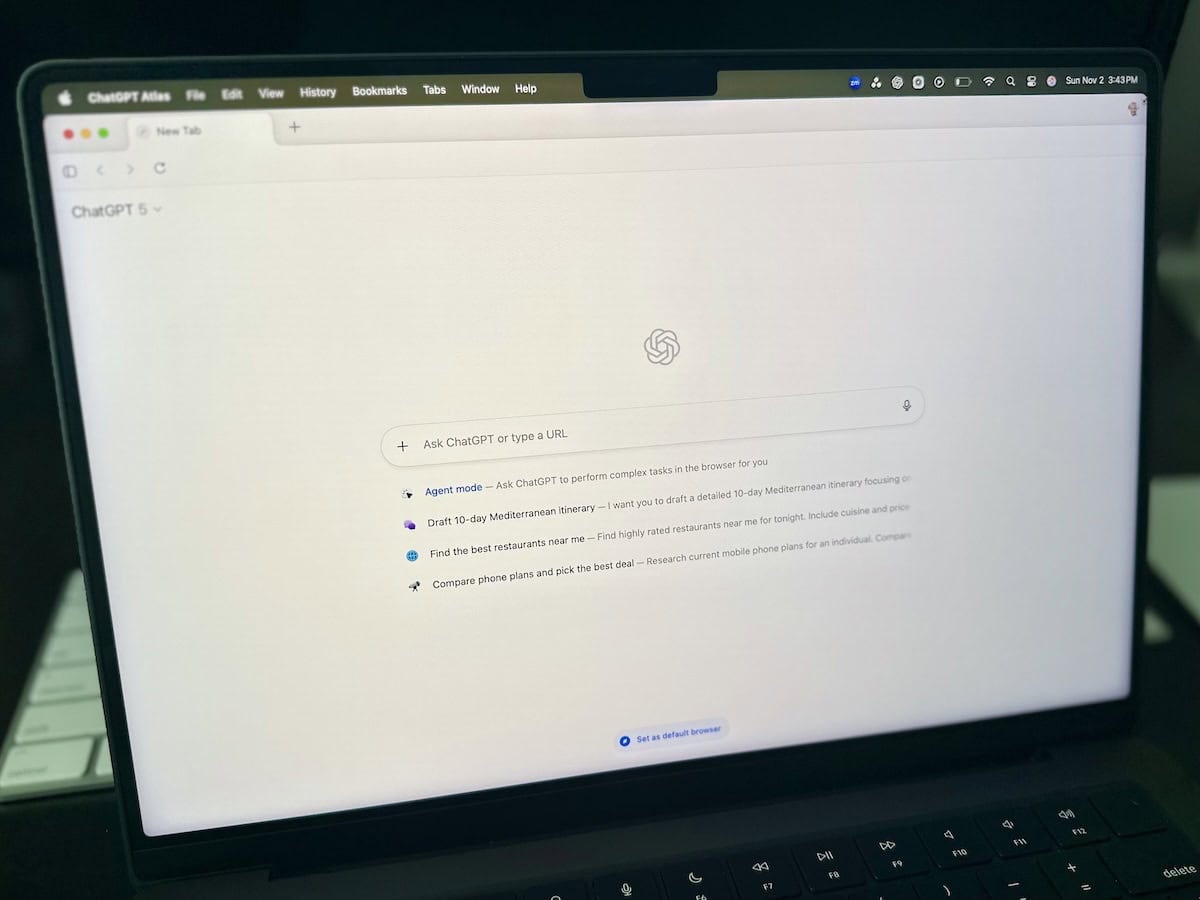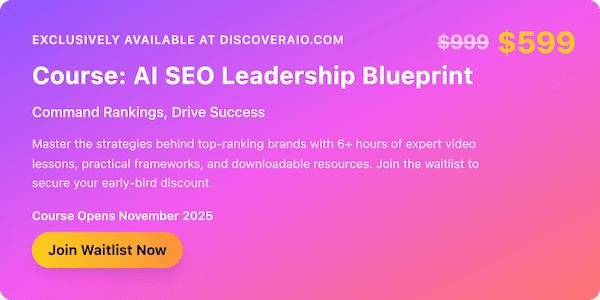
Google quietly crossed a new line in the evolution of search this week. According to the latest dataset from Advanced Web Ranking, Google AI Overviews now appear in 60.32% of U.S. queries. It’s the first time the feature has cleared the 60% mark, doubling its presence since August 2024 and solidifying its place as the dominant experience in Google’s interface.

This shift arrives alongside another development gaining attention in the AI ecosystem. In a recent post, AirOps CEO Alex Halliday cited data indicating that ChatGPT now receives roughly 2.5 billion queries per day and is on pace to overtake Google’s search volume by 2027. It’s a striking projection, not only for what it implies about ChatGPT’s momentum but because it aligns with what we first suggested last summer: AI-generated answers were likely to eclipse the familiar results page by mid-2027. The two trajectories now point to the same outcome from different angles — Google meeting users with AI summaries inside its search results, and ChatGPT steadily approaching Google’s query volume from the outside.
The rise in AI Overviews is only part of the picture. User behavior is shifting at the same time, and the platforms shaping that behavior are multiplying. Over the past few months, Perplexity released the Comet Browser, OpenAI launched its Atlas Browser, and several major brands introduced native ChatGPT integrations to guide customer decisions directly inside the assistant. The distance between “search” and “assistant” continues to shrink. Answers, not links, are becoming the default way information is consumed.

As AI Overviews have climbed past 60%, we’ve watched our own data reflect the consequences of early adoption. Our recent analysis on AI Search Visibility illustrates how citations inside summaries create outsized exposure, far greater than any single search position could have offered in the past. We also documented what happens when a business becomes a common reference in AI-generated responses: prospects arrive already familiar with the brand, already trusting the explanation they received, and already prepared to take action. The volume of opportunity generated during those periods was larger and more geographically diverse than anything produced by traditional SEO.
The trend toward AI-driven answers has also reshaped how content needs to be written, structured, and connected. As we detailed in our case study earlier this year, the fastest gains in AI visibility came from producing material that AI systems could interpret cleanly — articles that defined terms clearly, addressed real user questions, and offered examples or explanations that models could reuse. This isn’t a cosmetic change. It is a shift in how the web is parsed and how authority is assigned.

The human side of this change is just as important. In our exploration of the psychology behind AI search, we noted that users respond differently to synthesized answers. They read them with more confidence, experience less friction, and place more weight on the sources mentioned within them. Trust accumulates earlier in the decision path, long before a click. That effect is now visible in every channel where AI summaries have taken hold.
Viewed alongside other recent developments, the 60% figure helps illustrate how user behavior and search presentation continue to shift toward AI-generated responses. Google is adapting from within by elevating AI summaries to the top of the page. ChatGPT is advancing from the outside by drawing billions of direct queries each day. New AI browsers are reshaping the interface that surrounds these interactions. And brands integrating directly with assistants are removing steps from the discovery process entirely.
All of these signals converge on the same conclusion: the AI-first search experience is no longer something arriving in the distance. It’s already here, and the underlying numbers are accelerating faster than anticipated.
Advertisement
For organizations relying on visibility in search — or visibility inside AI systems — the work ahead is straightforward. Content must now be designed for models to understand, reference, and reuse. Brands have to build clarity into every explanation and give AI systems a reason to cite them. Those who do will be in the conversation when answers are assembled. Those who don’t will become invisible to the systems users trust most.
The latest numbers show how quickly the search experience is shifting, and how central AI-generated answers have already become.
- The Micro-Strategies That Make AI SEO Actually Work - December 2, 2025
- Google AI Overviews Clear 60% as New Data Suggests ChatGPT Will Surpass Google Search Traffic by 2027 - November 16, 2025
- AI SEO for B2B Companies: How to Compete in an AI-Driven Search Landscape - November 16, 2025
Affiliate Disclosure: This site includes affiliate links, which means I may earn a commission if you click through and take action—at no extra cost to you. I only promote tools and services I trust and use myself.

